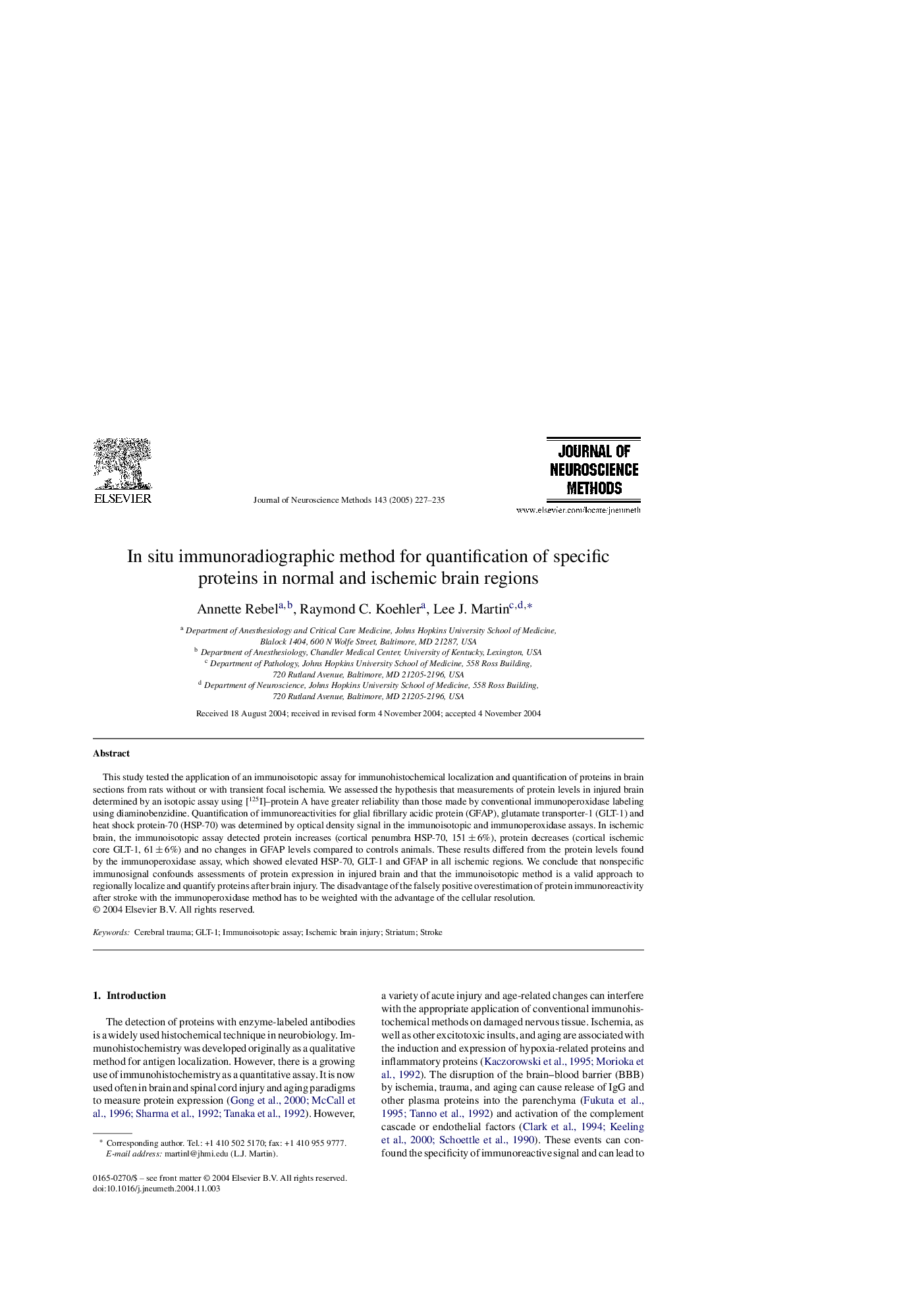| Article ID | Journal | Published Year | Pages | File Type |
|---|---|---|---|---|
| 9424317 | Journal of Neuroscience Methods | 2005 | 9 Pages |
Abstract
This study tested the application of an immunoisotopic assay for immunohistochemical localization and quantification of proteins in brain sections from rats without or with transient focal ischemia. We assessed the hypothesis that measurements of protein levels in injured brain determined by an isotopic assay using [125I]-protein A have greater reliability than those made by conventional immunoperoxidase labeling using diaminobenzidine. Quantification of immunoreactivities for glial fibrillary acidic protein (GFAP), glutamate transporter-1 (GLT-1) and heat shock protein-70 (HSP-70) was determined by optical density signal in the immunoisotopic and immunoperoxidase assays. In ischemic brain, the immunoisotopic assay detected protein increases (cortical penumbra HSP-70, 151 ± 6%), protein decreases (cortical ischemic core GLT-1, 61 ± 6%) and no changes in GFAP levels compared to controls animals. These results differed from the protein levels found by the immunoperoxidase assay, which showed elevated HSP-70, GLT-1 and GFAP in all ischemic regions. We conclude that nonspecific immunosignal confounds assessments of protein expression in injured brain and that the immunoisotopic method is a valid approach to regionally localize and quantify proteins after brain injury. The disadvantage of the falsely positive overestimation of protein immunoreactivity after stroke with the immunoperoxidase method has to be weighted with the advantage of the cellular resolution.
Related Topics
Life Sciences
Neuroscience
Neuroscience (General)
Authors
Annette Rebel, Raymond C. Koehler, Lee J. Martin,
